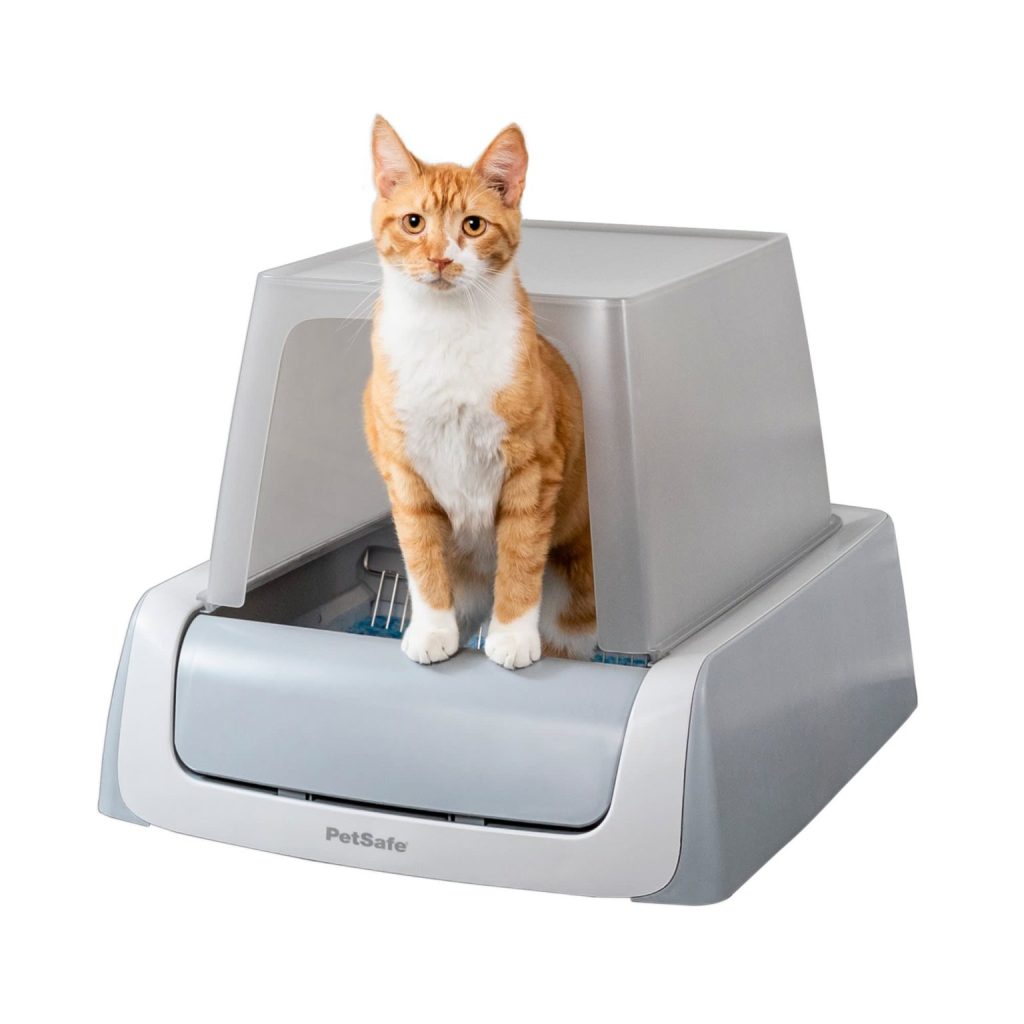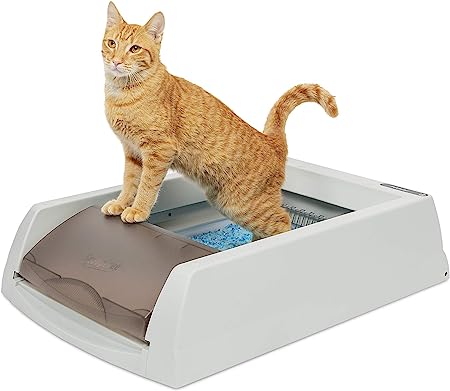Table of Contents
Build a cat litter box yourself – DIY instructions for 2 different cat litter boxes
Are you a good craftsman and would you rather build your own cat litter box instead of buying it? No problem, in this blog you will find 2 great instructions for your diy litter box: The first instruction shows you how to make the cat litter box with front entry yourself. The second guide shows you how to build a cat litter box with the top entry. We wish you a lot of fun creating the best litter box for your feline fellow!
What materials do I need to make my own kitty litter box?
No matter which of the two DIY cat litter box models you choose, you should first have the following materials ready:
- Crate adapted to the size of your cat
- Lid matching the box
- Craft knife (or saw for plastic)
- soft edge protection profile
- ruler
- Pen
- fine emery paper or sanding sponge
- Workbench, cardboard or other surface for cutting
What is the right box to make your own cat litter box?
Transparent boxes are very popular with most cats. Even cats that don’t actually accept closed litter boxes are usually less inhibited in trying out the closed litter box and using it regularly with transparent boxes. Of course you can also use a non-transparent box. Moreover, you can also repurpose an old box or storage bin to create a custom cat litter box.
When choosing the box size, please consider that your cat can stand comfortably in the litter box and turn around. When cats go about their business, they usually don’t want to bump into the edge of the litter box. Your cat also needs enough space to bury its business. The length of the box should be at least as long as your cat plus 10cm. The larger the homemade litter box, the more comfortable it is for your cat.

Make your own cat litter box with front entry
Here I will show you how you can make a closed litter box with front entry yourself. Does your cat prefer an open litter box? Then just leave the lid off. So you have an open litter box with high walls that prevent your cat from peeing over the edge and scratching out the litter.
Directions:
- First you get yourself a suitable box with a lid, which should be the starting point of your litter box.
- Next, choose a side of the box where you want the entry hole to be and mark it with a ruler and pen. The hole should be big enough so that your cat can enter comfortably. You should also adjust the entry height to your cat. Kittens that are still small or older cats may have problems with access that is too high. We recommend a minimum height of around 12 cm for entry. At this height, you can fill in enough cat litter and your cat will still not be able to scratch it out so easily.
- Next, cut out the entry hole from the box using a box cutter. To do this, place the box sideways on the cutting mat (e.g. cardboard). Of course you can also work with a saw instead of a cutter.
- When you cut out the entrance, you should smooth the edges with sandpaper or a sanding sponge so that your cat cannot injure itself. If you want, you can also attach an edge protection profile to the edges as additional protection.
- In the last step you fill the box with cat litter and put the lid back on. Your new litter box is ready.

Make a top-loader cat litter box yourself – cat litter box with entry from above
Here we show you how you can build a closed litter box with an entry from above yourself. With a top-loading litter box, your cat has no chance of peeing over the edge of the litter box because it is closed all around. Also, with a top-entry litter box, much less litter escapes outside. This keeps the area around the litter box nice and clean.
Young kittens and older cats may have trouble getting into a top-loading litter box. Then you should rather build a litter box with front entry yourself.
Directions to create a cat litter box from scratch:
- First you get a suitable box with a lid as the starting point for your litter box.
- Next, take the lid and use a ruler and pen to mark the entry hole on one side. The hole should be big enough for your cat to comfortably fit through, while still leaving enough walking space on the litter box lid.
- Next, cut out the access hole in the lid using a utility knife. To do this, place the lid on the cutting mat (e.g. cardboard). Of course you can also (as in the video below) work with a saw instead of a cutter.
- Where you cut out the entrance, you should smooth the cut edges with sandpaper or a sanding sponge. This prevents your cat from injuring itself. If you like, you can attach a soft edge protection profile to the edges as additional protection.
- You can drill a few more holes in the closed part of the lid so that the cat litter that is still hanging on your cat when it leaves the litter box falls back into the litter box. Alternatively, you can cut a cat litter mat and stick it to the closed part of the lid.
- The last step is to fill your new box with cat litter and put the lid back on. Your homemade mess-free litter box is ready.
Final Thoughts on DIY Kitty Litter Box
So cat parents, I hope you love the idea to create a litter box on your own without much hassle.
Share this step-by-step guide with your friends and keep following our blog to read more cat content.
DIY Litter Box for Cats – FAQs
Q: What materials do I need to make a DIY cat litter box?
A: You will need a storage bin or tote, a cat door, and any tools required to cut a hole in the side of the bin or tote.
Q: How do I repurpose a storage bin or tote into a litter box for my cat?
A: You can repurpose a storage bin or tote by cutting a hole in the side for the cat door, ensuring it is large enough for your cat to enter and exit comfortably.
Q: Can I use any type of litter with a DIY cat litter box?
A: Yes, you can use the litter of your choice with the DIY cat litter box, but be mindful of any odors and your cat’s preferences.
Q: What are the benefits of keeping the litter box inside a litter box enclosure?
A: Keeping the litter box inside an enclosure can help contain litter scatter and minimize odor, providing privacy for your cat and a neater living space for you.
Q: Is a cat door necessary for a DIY cat litter box?
A: A cat door is not necessary, but it can be convenient for allowing your cat to enter and exit the litter box enclosure easily.
Q: How can I ensure that my large cat can comfortably use the DIY litter box?
A: When making a DIY litter box, ensure that the dimensions are suitable for your large cat to comfortably enter, move around, and exit the box.
Q: What should I do with excess litter that my cat kicks out of the litter box?
A: You can place a mat underneath or around the litter box to catch excess litter, making it easier to clean and maintain a tidy space.
Q: Are there any specific considerations for creating a DIY litter box for a cat with mobility issues, such as arthritis?
A: Yes, consider the height of the box and ease of access for a cat with arthritis. Choosing a low-sided box or providing a ramp may be helpful.
Q: How can I keep the litter box area mess-free and easy to clean?
A: Ensuring the litter box is enclosed, using a litter mat to catch excess litter, and routine cleaning can help maintain a mess-free and easy-to-clean litter box area.
Q: Is it simple to make a DIY cat litter box, and where can I find a tutorial for this?
A: Making a DIY cat litter box is relatively simple, and you can find tutorials online or in DIY guides for step-by-step instructions.